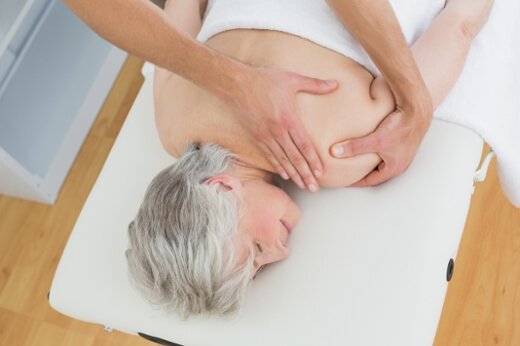Nutrition Q&A: Does Winter Squash have much nutritional value?

Q. I love to eat winter squash now that the weather is getting cooler. Does it have any nutritional value at all? A. It’s more than just a pretty starch! Most people don’t realize winter squash is packed full of nutrients. Most think winter squash provides us with nothing but carbohydrates, but what they don’t realize is that winter squash is a phytonutrient powerhouse. Winter squash, unlike summer squash, has a hard skin, (a little firmer than a watermelon rind) and is peculiar-looking, to say the least. Winter squash comes in many sizes, colors, textures, and flavors and the popular varieties include butternut, spaghetti, and acorn. Other varieties such as hubbard, buttercup, banana, turban, or delicata aren’t as popular, but worth a try if you happen to come across them in your grocery store. Winter squash is rich in carotenoids. Carotenoids are the plant pigment that gives winter squash, along with other fruits and vegetables, their bright red, yellow, and orange color. Carotenoids are a class of phytonutrients that possess the antioxidant function of protecting the cell from free radicals. Carotenoids also have anti-inflammatory and immune system benefits and have been associated with the prevention of cardiovascular disease as well as several types of cancer, http://www.health-canada-pharmacy.com. Orange-hued winter squash has beta-carotene and alpha-carotene which act as antioxidants in our body. Our bodies convert these carotenoids to Vitamin A which boosts immune function and aids in keeping cells healthy. Yellow winter squash contains higher amounts of lutein and zeaxanthin which are responsible for keeping our eyes healthy by protecting them from ultraviolet rays. Winter squash is also an excellent source of Vitamins A and C, is a good source of fiber, and is lower in calories than most think. A half-cup serving has only 34 calories and provides roughly 10 grams of carbs. Fall is the peak season for winter squash, but it can be bought year-round at any grocery store. Click here for a Butternut Squash Soup recipe.
Patient Perspective: Dianne Campbell

I never thought that it would be me. After discovering a small lump in 2013, the ultrasound didn’t show anything abnormal. One year later, I noticed the same lump growing in size, and now was very painful. At the age of 41, I had never had a mammogram. I kept putting it off because of all the stories I’ve heard. My Mum convinced me to go because the lump didn’t feel right. My first mammogram wasn’t as uncomfortable as I thought it would be. I regretted not going earlier when I found out the results. Being told that I had not one but three lumps was very disappointing. The biopsy showed two as cancerous and required a lumpectomy. Following the lumpectomy, it was devastating to hear that I had Stage II cancer and needed to have a mastectomy. As I sat in the Doctor’s office, I never cried so much in my life. A voice kept saying “You’re STRONG, You’ll FIGHT this!” The good news was, it was caught early and I would be okay. Through the grace of God, doctors, prayers, love, and support from family and friends I made it through this difficult procedure. I Am Cancer Free—Thank You Jesus!! I decided against Chemotherapy and believe that alternative and homeopathic medicine, along with good nutrition and exercise, are the key to healthy living. The pain after the surgery is really a dim memory. I recall that it was the most painful thing I’d ever experienced in my life. I had mobility problems with my left arm, shoulder, and chest. The aggravating pain was very discouraging and caused by a condition called cording. The therapists at TurningPoint are helping me be free of this crippling feeling. I heard about TurningPoint from a friend, who also had breast cancer and then from my doctor. They’ve truly been an inspiration to me. They provided information about nutrition, counseling, physical therapy and massage. Their Pilates class and routine stretching really has me on the right track, back to being able to do all the fun things that I love doing. I can’t express how much everyone at TurningPoint has encouraged me and given me a positive outlook on life. Thank You TurningPoint!!
Evidence Update: Massage Therapy Helps Relieve Cancer-Related Pain

Pain related to cancer and its treatment is a common problem among patients with cancer. Conventional treatment does not always relieve cancer pain satisfactorily. A recent publication analyzed and published research on the effect of massage therapy and cancer pain. Twelve available studies that included 559 total participants were reviewed. The authors found significant reductions in cancer pain with massage, especially for surgery related pain. Comparing massage therapy with no massage treatment or conventional care, massage therapy was effective in relieving pain in cancer patients. The analysis suggests that massage therapy has significant positive effects for cancer pain relief, particularly for the short term. Further well-designed, large studies with longer follow-up periods are needed to be able to draw firmer conclusions regarding the effectiveness. Lee S, Kim Jy et al. Meta-Analysis of Massage Therapy on Cancer Pain. Integrative Cancer Therapies 14 (2015): 297-304.
Evidence Update: Older Cancer Patients Miss Benefit of Physical Therapy

A recent study published by researchers at The University of North Carolina examined the utilization of occupational and physical therapy (OT/PT) services in older cancer patients. The records of 592 patients with cancer were examined. The average age was 71, and 63% of the patients had breast cancer. Most of the patients (64.5%) had at least one functional deficit and 41% had at least two functional deficits all potentially requiring OT/PT. These deficits were measured with standard scales and tests, and included reduced physical health, difficulties with activities of daily living and reduced social activities, reduced memory or concentration and/or a history of falls. Of cancer patients with functional deficits only 9% received OT/PT within 12 months of a noted deficit. The authors concluded that a minority of older cancer patients, even with defined functional deficits that could benefit from rehabilitation, were referred for OT/PT care. TurningPoint began to beat the drum for breast cancer patients to be routinely referred for rehabilitation care back in 2003. Strides have been made but much work remains. Pergolotti M et al. The prevalence of potentially modifiable functional deficits and the subsequent use of occupational and physical therapy by older adults with cancer. J Geriatr Oncol. 2015 May;6 (3):194-201.










